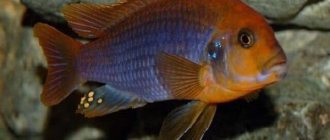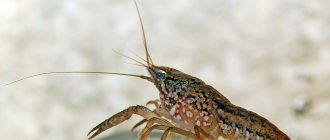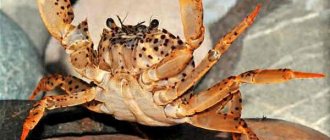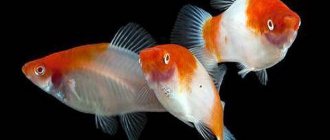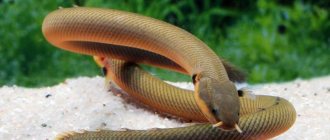Among hundreds of unique plants that are intended for decorating aquariums, Staurogin is considered one of the most popular. In the wild, it can be found in the rivers of the Amazon Basin and some tropical areas of South America. Staurogin received decorative value in 2005, and widespread demand for the purchase of shrubs began in 2008.
Staurogyne is popular among aquarium decorators
Staurogyne in nature
Its closest relative is considered to be Hygrophila. However, Staurogyne repens is shorter and has denser, denser, smaller leaves. And besides this, hygrophila’s stems grow vertically, while our main character’s stems grow horizontally.
The plant was discovered by botanist Klaus Christensen during an expedition that took place exactly in the place where it grows. The scientist was the first to see green clusters in the water and on the rocks. These bushes did not immediately receive a botanical name.
Previously, research and DNA analysis were carried out, which confirmed their belonging to the Acanthus family and gave the name to the species. The general public first saw this aquarium novelty at a thematic exhibition that took place in May 2008.
Appearance
Staurogyne belongs to the category of creeping plants and is one of the representatives of the Acanthus family. Its historical homeland is Brazil and South America, but over the past decades this culture has gained enormous popularity and wide distribution among aquarists living in different parts of the globe.
The plant is distinguished by its modest size, since the height of adult specimens in most cases does not reach 10 cm.
Thanks to this feature, staurogyne is excellent for keeping and growing even in small tanks.
Particular attention is drawn to the leaf blades of the plant, which have an unusual, original shape and rich green, even emerald color. Moreover, the leaves are arranged crosswise, forming beautiful rosettes. As the plant grows, it forms a green mat spreading along the bottom of an artificial reservoir, which is why it is often used for decoration and creating aquarium design.
Staurogin has a powerful, well-developed root system, which allows it to take root well in any soil.
Content
Various conditions of detention have virtually no effect on Staurogin repens. Only the rate of its growth changes. The optimal water temperature is 22–28°C, the active reaction of the water is close to neutral, pH is about 7.
For the normal development of the plant, lighting with an average intensity of 0.25 W/l is sufficient; brighter lighting and the supply of CO2 actively stimulate its growth.
Staurogyne's powerful root system allows it to successfully take root not only in any soil, but also on stones and snags. When planted in the ground, all lower leaves that may be buried are torn off. Long vertical shoots are shortened, this will stimulate the formation of lateral creeping shoots. In this case, the cut shoots are planted nearby, thereby compacting the lawn.
Adding small pieces of clay under the roots, and even more so adding fertilizers to the soil, allows you to get the most beautiful and healthy plants.
When servicing the aquarium, the old large leaves of Staurogin repens are removed, and its thickets are trimmed to a height of 2–3 cm from the ground. Using uneven cutting, you can create a beautiful multi-tiered lawn.
As a result, the rather slowly growing Staurogyne repens retains its decorative appearance for a long time without intervention.
Description
This plant appeared in the world of aquariums relatively recently. It was introduced by Tropica in 2008. But, of course, this underwater flora also exists in nature. However, it was only 12 years ago that he was correctly identified. Before this, it was considered Hygrophila macrofolia.
Staurogine occurs naturally in the waters of South America. For the first time, its varieties were collected in the state of Mato Grosso, in Brazil. The plant is found near the banks of the Rio Cristalino River. It is interesting that in its natural environment this plant prefers to stay on land. It is fixed on a rocky area that is well lit. However, it easily gets used to water. That is why many aquarists actively use this flora to create beautiful aquascapes in the aquarium.
In its underwater form, staurogyne repens is a small bush consisting of several adjacent stems, a creeping root that sprouts new shoots. The leaves are arranged in pairs on a whorl. They reach only 4-5 cm in length and no more than one centimeter in width. The leaves are ovate, lanceolate or elliptical in shape. The plant has a classic green color for flora. However, there are other varieties. For example, staurogyne is brown.
Staurogyne in aquarium design
Krestovka (this is the common name of the plant) can be successfully grown in large, small and even nano aquariums. When it grows, it covers the bottom with a magnificent bright green carpet with picturesque hills.
Moreover, this landscape is formed independently, without human intervention (frequent haircuts or intentional denser plantings). It grows slowly, which means that your “lawn” will always look neat.
In aquatic design, staurogyne is best used to design the middle ground, as well as the transition from the middle to the foreground.
But placing it close to the facade glass is not the best idea, the leaves are large. This is not a background plant; it is too conspicuous.
However, it is ideal for creating focal points (these are a kind of accents). Grows well both on substrate and on stones with driftwood. Sometimes on sale you can find a cross, grown on pieces of lava. It can be placed in groups or individually. Hemianthus and utricularia can be ideal aquarium companions for her.
Staurogyne breeds
simply creeping. Like other long-stemmed plants, after cutting off the top, daughter shoots are formed on the “stumps”. When the “babies” gain strength and acquire 6 leaves, they are separated and planted in the ground, just like the trimmed top.
After some time, the young shoots take root and begin to grow. Soon horizontal side shoots form and the plant bushes. Staurogyne repens also grows well outside the aquatic environment. Grown in a moist paludarium, the plant does not change much: only the leaves become oval rather than oblong.
Reproduction methods
The aquarium plant Staurogin reproduces in different ways. Among them:
- cuttings;
- seedlings.
In the first case, you need to cut small cuttings from a vertical shoot and then plant them in prepared soil. When using the second method, you need to cut out a shoot that already has a formed root system, and then transplant it into an appropriate container with soil. The last option is particularly simple, so even inexperienced beginners can handle it.
For beginners, propagation of Staurogin is best done by obtaining seedlings
The main decorative purpose of the shrub is to decorate the interior space of aquariums. It is used as a ground cover plant in the foreground and middle ground.
When arranging compact aquarium tanks, you can place the culture at the back. In this case, it is better to stick to group planting of Staurogin, and in order to maintain its decorative shape and attractiveness, the upper shoots should be trimmed in a timely manner.
You can get a beautiful green carpet from an exotic plant in this way:
- A pair of seedlings are placed at a close distance from each other.
- After completing the next pruning work, suitable cuttings must be planted together. As a result, the culture will form a shoot, which will begin to spread along the bottom and form a continuous carpet.
A green carpet made from the Staurogyne plant looks very original in an aquarium.
Staurogyne (staurogyne repens) also looks colorful in compositions with driftwood and stones. It is often combined with other algae, including:
- Hemianthus cube;
- Glossostigma.
Most often, these species are combined in small nanoaquariums, where they turn into lush compositions.
Trimming Staurogin helps increase its fullness.
If the bushes are planted too densely, they will be subject to excessive branching. To get a picturesque hill, it is enough to skip several pruning activities, as well as reduce the frequency of haircuts. In this case, only the upper unnecessary branches are cut off, which disrupt the decorative attractiveness of the shrub. As you know, Staurogin is not afraid of pruning, but, on the contrary, after such procedures it becomes especially thick and lush.
Due to its distinctive appearance, compact size and rapid growth of green mass, exotic Staurogin is suitable for almost all aquariums of different sizes. In addition, the plant has a unique composition, which includes numerous substances that purify water from nitrates and maintain its impeccable purity.
Top dressing
Staurogyne can easily do without complex fertilizers. However, it responds to feeding with active growth, healthy appearance and brightly colored leaves. If you decide to pamper your weed and breathe new life into it, place small balls of red clay under its roots. Brown leaf varieties of staurogyne require a liquid fertilizer high in iron, potassium and nitrogen. Brown staurogyne especially loves this fertilizing, which reacts to fertilizers with a bright, rich color of stems and leaves.
Return to content
A haircut
Bihar
Staurogin grows slowly, so it is cut no more than 1-2 times a month. During trimming, scissors are used to carefully remove shoots that stand out from the overall picture and grow in a vertical plane. A trimmed plant develops new side shoots, so the carpet becomes denser and its decorative properties increase.
ATTENTION: Haircuts require only varieties of staurogyne with a creeping stem, forming a dense carpet on the ground. Upright plants such as Staurogyne bihar do not need to be trimmed.
Return to content
Where is the best place to plant
Staurogine is often used for decorative purposes to create unusual, unique aquarium designs and landscapes. Moreover, which is especially appreciated by aquarists, after planting the plant will not require constant care to maintain a beautiful decor. It is enough just to cut off its tops a little once every few months and thin out the green spaces in case of excessive growth.
You should not plant this crop near the front wall in the area of the facade glass, since this large-leaved plant will be very conspicuous, overshadowing all other decorative elements of the aquarium design.
Due to the compactness of the crop, it can be planted at different points in an artificial reservoir, in groups or one at a time. If you want to form a beautiful, creeping emerald carpet on the bottom of the aquarium, you need to place several seedlings close to each other, and then plant the cuttings together. As the plant grows, it forms a long creeping shoot that completely covers the bottom of an artificial reservoir.
Staurogin is one of the most beautiful and spectacular aquarium plants with excellent decorative properties. At the same time, it does not require any specific care and easily adapts to changes in climatic conditions.
Moss Cameroon
Ameroon is perhaps the most elegant aquarium moss. The tips of its stems sometimes curl beautifully in the form of curls and curls, and large oval leaves distinguish it from all other aquarium mosses. The mysterious appearance makes this plant an exquisite decoration for any aquarium.
M oh Cameroon is not picky about lighting. This moss is one of the rare examples of aquarium plants that are not only shade-tolerant, but even love partial shade and, being shaded, feel even better. The ideal habitat for Cameroon moss is in dimly lit corners of the aquarium or in a shaded area under the dense foliage of a vigorous plant, such as Cryptocoryne or Echinodorus. You can shelter Cameroon moss inside a grotto or in the shade of other aquarium decorations. This is an ideal plant for filling those areas of the aquarium where other plants simply cannot survive. Cameroon moss is one of the few plants that can live in an aquarium that is not equipped with a lamp at all, being content with ordinary room lighting, and not only will not suffer from a lack of light, but will even produce growth.
Cameroon moss grows extremely slowly, so it does not require cutting. This moss is an ideal plant for so-called “slow” aquariums.
The cost of Cameroon moss is 200 rubles.
There are about 20 stems per serving - enough to green up a large stone or medium-sized snag
The cost of Cameroon moss grown to volcanic lava is 300 rubles. the mosses are securely attached to the stones, have grown well and camouflaged the fasteners
Tips and lifehacks
- When growing staurogyne, it is recommended to periodically test the phosphate and potassium levels in the water - this will help prevent disease and deterioration in appearance. The first sign of nutrient deficiency is small holes on the leaves.
- The plant goes well with other representatives of the ichthyoflora, but the founder of the AQUAYER company, Sergei Ermolaev, advises choosing your neighbors responsibly. Riccia, for example, consumes a lot of potassium, so it can create a deficiency for staurogyne.
- If staurogyne repens is growing too slowly or appears depleted, it is necessary to not only check the nutrient concentrations, but also increase the carbon dioxide supply and lighting.
- Sometimes when planting staurogyne, it turns out that its stems are too short, and the bush floats to the surface. For rooting, you can use a stainless steel weight and cotton thread or plastic staples with which the plant is pinned to the ground.
- Some herbivorous fish species gnaw the leaves of staurogyne - if such a phenomenon is observed constantly, only resettlement in separate aquariums can save the plant.
- Staurogyne repens can be grown both in aquariums and in humid environments. It takes root well in such conditions, and its leaves will not be elongated, like those of the aquarium variety, but oval.
